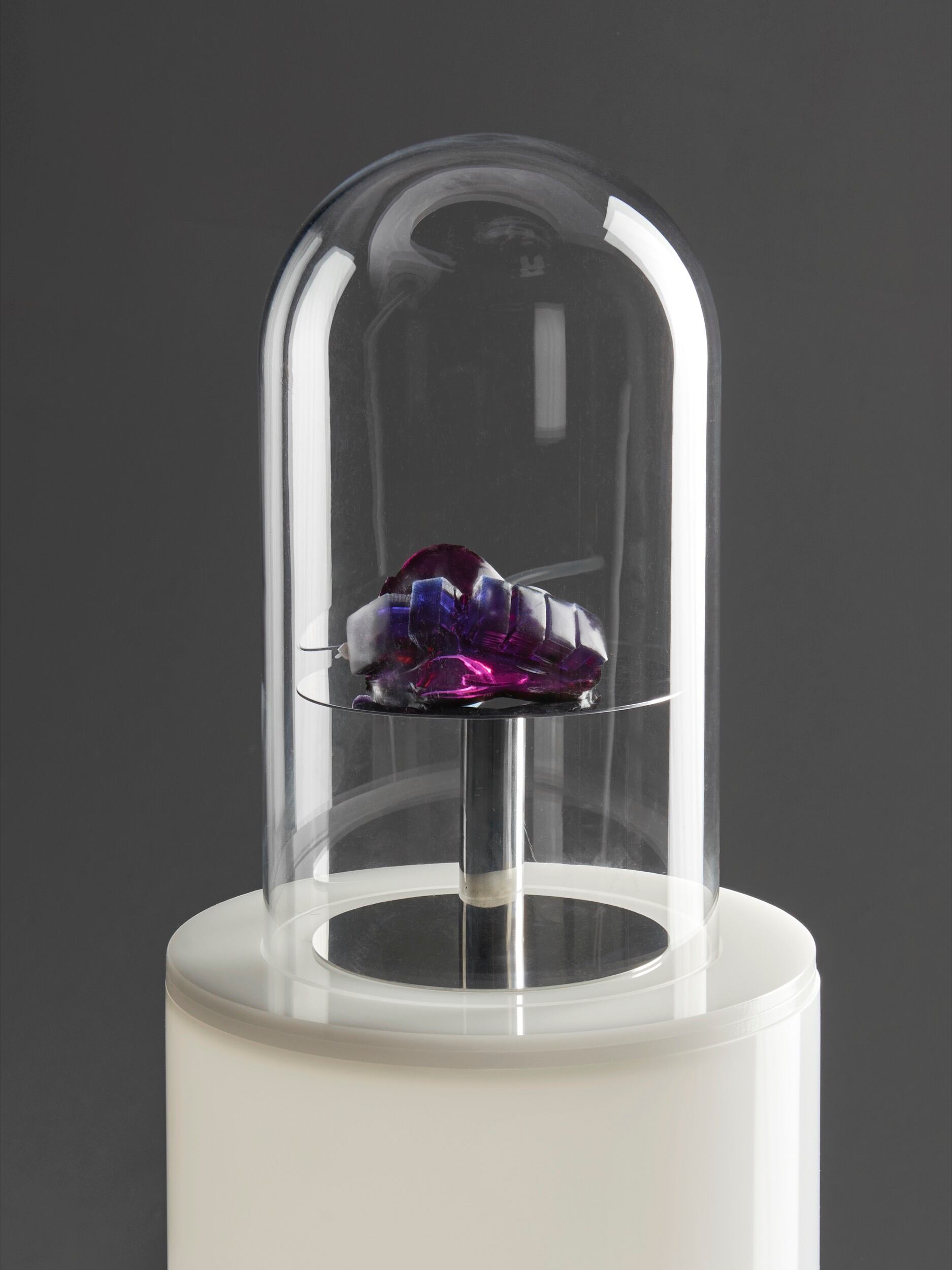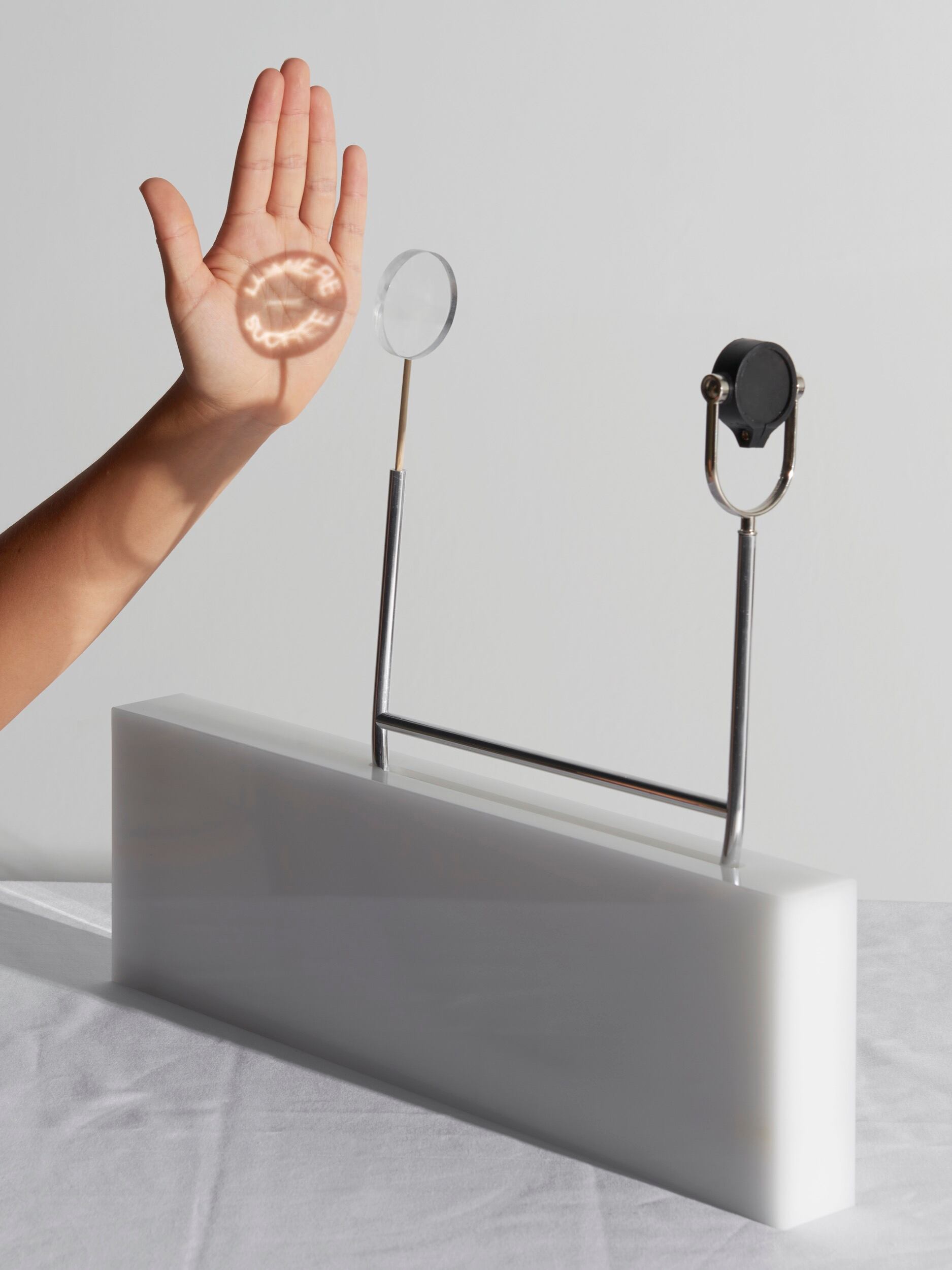Experimental project Déguster l’augmenté is the brainchild of Erika Marthins. Her research looks to “explore the potential of integrating data information into food”.
“To develop this project I asked myself the question: how could we consider food in a new way with the process of today’s technology? I found it interesting to bring the integration of algorithms into edible material. Food and digital traces are topics that fascinate me, I think there is an infinity of possibilities to augment food,” Marthins explained.
Marthins wanted to examine processes that could bring new experiential elements to food. The idea being to use data to marry taste sensations with cultural experience.
“I wanted to integrating data directly into the surfaces of food. Augmented food brings a new dimension into a dish, something I think could open up to new practice, different from molecular cuisine especially. A compressed bite of edible culture that has the flavour of your own passion, like music.”
Her ambition was to “create a different personalised experience” changing “the idea of how to eat and consume food, and also our relationship with technology”.
Animation, perception and sound
The project developed three prototypes. Each one was designed to highlight a unique feature: animation, perception and sound.
The first, an animated dessert using edible robotic technology, was developed in conjunction with Dr Jun Shintake from the Laboratory of Intellident Systems (EPFL) and and Chef Fabien Pairon, of Ecole hôtelière de Lausanne. Marthins describes the result as “the sweets of the future”. It consists of a soft pneumatic gelatin actuator.

The second proposition is “poetry in a lollipop” that uses external lights to refract a message. It was developed in conjunction with using light shaping technology from RayForm which was combined with Pairon’s recipe development

The third dessert is a record made of chocolate that enables people to “experience and taste sound”. It was developed in collaboration with Pairon and fellow Ecole hôtelière de Lausanne Chef, Julien Boutonnet.

“All three desserts are without any electronics [and are] therefore completely edible. Because you eat them, you are kind of forced appreciate the moment and enjoy the one-time experience,” Marthins told FoodNavigator.
Technical challenge
Developing these “augmented” desserts presented a number of technical challenges.
“When integrating data such as audio and images, it must be very accurate for it to work. Food is a very [sensitive] material that is influenced by temperature…. It was not easy to get it to so very be precise so that these micro-details don’t get destroyed or disappear.”
Interdisciplinary collaboration was key to the actualisation of Marthins’ vision, she suggested.
“When I found the technology from RayForm and Dr. Jun Shintake's research, I contacted them to see if they were interested in a collaboration. They both were working on a completely different technology being the latest within todays innovations. Thanks to the great relationship between ECAL and EHL I got in contact with Chef Fabien Parion, that has been a very inspiring person to work with. Without these great people this project would not have been possible.
“When you have a successful collaborating with other professions, it pushes the individuals to question and to innovate which results in prototypes or experimental creations. I also think projects combining technology and culinary art will open the door to a new niche of practices.”
Marthins believes a truly personalised food experience that can be delivered through augmentation “as a lot of potential in the future”.
She is coy on any plans to develop the concept on a commercial basis. “Right now looking to continue this project and I’m very excited to develop further augmented food experiences and to see what the next steps could be.”
